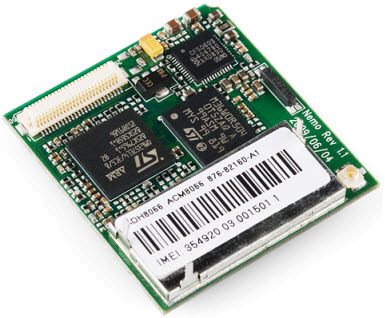IC – The full form of IC is Integrated Circuit, is a small semiconductor-based microchip that contains thousands of electronic components which are made of millions of fabricated transistors, resistors, and capacitors. ICs are the building blocks of most of the devices electronic devices and equipment.

An integrated circuit(IC) is also known as a microelectronic circuit, microchip, or chip. The individual circuit components are generally microscopic in size.
How many generations of IC are there?
There are many generations of ICs with the increase in the number of transistors and logic gates per chip. Below is a list of each generation and the estimated capacity of each chip.
| SSI (small-scale integration) | 1 to 10 transistors and 1 to 12 logic gates |
| MSI (medium-scale integration) | 10 to 500 transistors and 13 to 99 logic gates |
| LSI (large-scale integration) | 500 to 20,000 transistors and 100 to 9,999 logic gates |
| VLSI (very-large-scale integration) | 20,000 to 1,000,000 transistors and 10,000 to 99,999 logic gates |
| ULSI (ultra-large-scale integration) | over 1,000,000 transistors and 100,000 logic gates |
What are the different types of IC?
Integrated circuits are classified into four types:
1. Analog Integrated Circuit

Analog circuits also known as linear IC that are work with continuous values. This means a component on a linear IC can take a value of any kind and output another value. Analog circuits are connected to devices that collect signals from the environment or send signals back to the environment.
Linear ICs are used as audio-frequency (AF) and radio-frequency (RF) amplifiers. Another typical use for an analog circuit is to control some device in response to continuous changes in the environment.
2. Digital Integrated Circuit
Digital IC is designed to accept only voltages of specific given values. These ICs use logic gates, which work only with values of ones and zeros. A low signal sent to to a component on a digital IC will result in a value of 0, while a high signal creates a value of 1.

Digital ICs are commonly found in computers, networking equipment, and most consumer electronics.
3. Mixed Integrated Circuit
Mixed circuit incorporates both analog and digital design principles. It can act as a digital-to-analog converter, analog-to-digital converter and clock/timer IC.

4. Microprocessor Integrated Circuit
The Microprocessor is the most complicated type of IC, capable of performing billions of operations per second. In a computing device, a microprocessor consists of the central processing unit (CPU) that drives a computer or graphics processing unit (GPU), which renders images and videos.

Since, A single microprocessor contains billions of interconnected transistors, each of which performs a specific logic function based on clock instructions. When the clock state changes, transistors perform the logical tasks (i.e., calculations) that they are programmed to perform. The clock frequency determines the speed of these functions.
Microprocessors also contain different kinds of predetermined memory locations or registers that store information:
- Permanent Register: Stores preprogrammed instructions for various operations.
- Temporary Register: Stores numbers to be operated on, and the results of an operation.
- Counter: Contains the memory address of the next instruction.
- Stack Pointer: Contains the address of the last instruction put into the stack memory.
- Memory Address Register: Contains the location (address) of the data to be worked on.
What are the advantages of integrated circuits?
The advantages of integrated circuits (ICs) include:
- It is small in size practically around 20,000 electronic components can be incorporated in a single square inch of IC chip.
- Many complex circuits are fabricated into a single chip and so this simplifies the designing of a complex electronic circuit. It also improves the performance.
- High Reliability
- Low cost due to bulk production.
- Consume less power.
- Higher operating speed due to absence of parasitic capacitance effect.
- Easily replaceable from the mother circuit.
What are the disadvantages of integrated circuits?
The disadvantages of integrated circuits (ICs) include:
- Since it’s of small size so it is unable to dissipate heat in required rate when current in it increased. That is why ICs are often damaged whenever over current flowing through them.
- Inductors as well as Transformers cannot be incorporated in ICs.
We have try to define “What is the Meaning of IC“. Hope you are like it! Thanks for reading this article. If you want to know more details about What is Modem in Computer. Click Here
